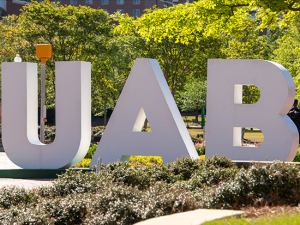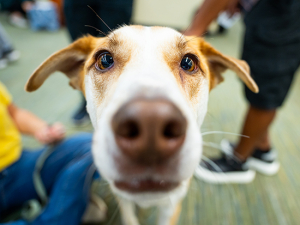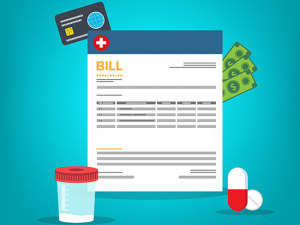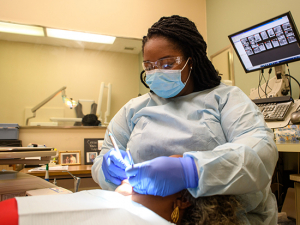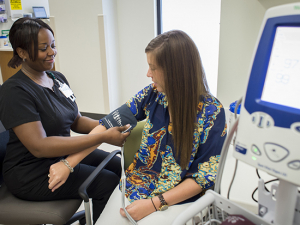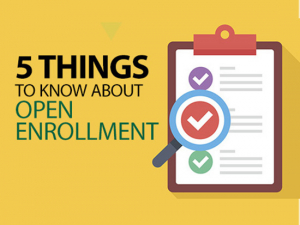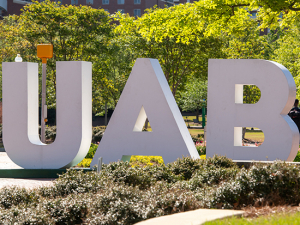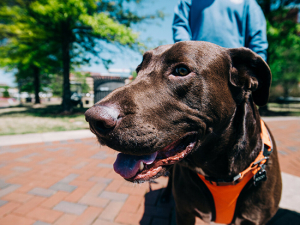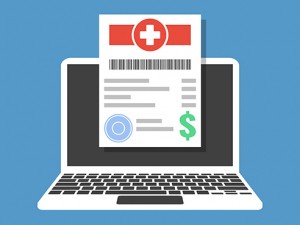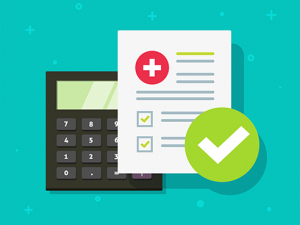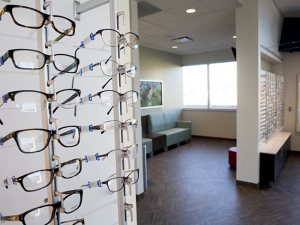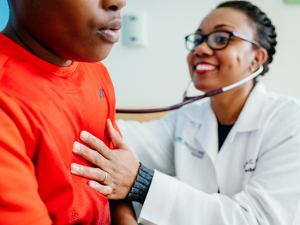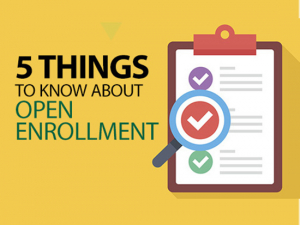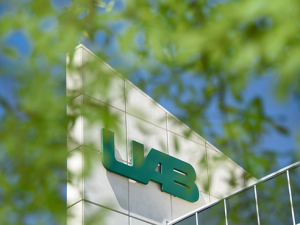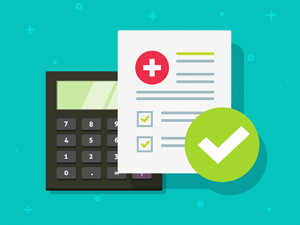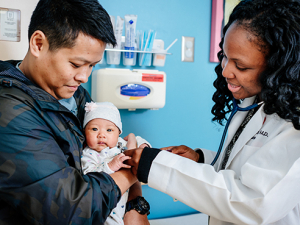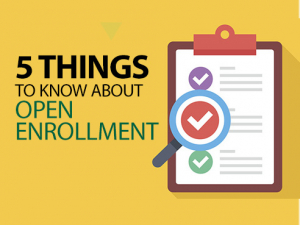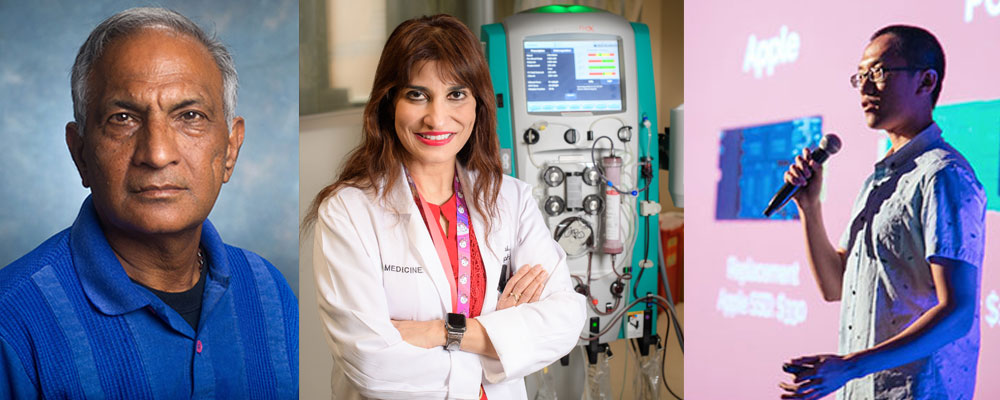 Innovators are everywhere at UAB: G.M. Anantharamaiah, Ph.D. (left), who was elected to the National Academy of Inventors in 2019, holds 19 U.S. and 45 foreign patents in the field of peptide synthesis and his discoveries have generated nearly $2.1 million in license fees and royalties to date; the anticoagulant developed by Ashita Tolwani, M.D. (center) is now sold around the world — and she has used some of her royalties to launch a nephrology innovation fund; Weida Tan (right) is one of two UAB student founders of the startup Fledging, which is now located at Birmingham's Innovation Depot.
Innovators are everywhere at UAB: G.M. Anantharamaiah, Ph.D. (left), who was elected to the National Academy of Inventors in 2019, holds 19 U.S. and 45 foreign patents in the field of peptide synthesis and his discoveries have generated nearly $2.1 million in license fees and royalties to date; the anticoagulant developed by Ashita Tolwani, M.D. (center) is now sold around the world — and she has used some of her royalties to launch a nephrology innovation fund; Weida Tan (right) is one of two UAB student founders of the startup Fledging, which is now located at Birmingham's Innovation Depot.
Eventually, research nurse Brenda Stofan couldn’t stand it anymore. “She got tired of me giving ideas away to companies,” said Ashita Tolwani, M.D., a professor in the Division of Nephrology whose expertise in continuous renal replacement therapy, also known as 24-hour kidney dialysis, put her in regular contact with the companies developing new machines for this complex therapy. “Brenda told me, ‘You’re not allowed to give any more ideas away.’”
So when Tolwani developed a novel anticoagulant solution that made CRRT safer and more efficient, and saw how it helped her patients, she and Brenda reached out to the UAB Research Foundation, now part of the UAB Bill L. Harbert Institute for Innovation and Entrepreneurship, or HIIE. “I was just looking to help my patients,” Tolwani said. “I was surprised no one else had thought of it first, because it seemed obvious. But it turned out that no one had thought about it that way.”
| One of the strategic objectives of Forging the Future, UAB's strategic plan, is to improve society through processes and products. |
In the simplest terms, the HIIE transfers UAB’s discoveries to the market through licensing and startup companies, said Executive Director Kathy Nugent, Ph.D. That includes intellectual property disclosure, patent filing and maintenance, plus marketing and commercialization, with the goal of “fostering collaboration with faculty and students to find commercial partners and create successful startups.”
Fast forward a few years, and Tolwani’s anticoagulant — patented by the Research Foundation, licensed to the giant medical products company Baxter International and sold all over the world — is now fueling more innovations in kidney-related diseases. In 2019, Tolwani used her royalties to establish the Tolwani Innovation Fund in Nephrology. The fund has already given grants to several UAB faculty and staff exploring their own ideas to improve patient care.
“I tell people, ‘If you have an idea, try it,’” Tolwani said. “Don’t sit there and talk yourself out of it. If it works, great. And if it doesn’t, that’s fine.”
What do UAB innovators — faculty, staff and students — need to know about turning ideas into reality? Experts from the HIIE shared answers to some of the most common questions they hear, from timelines to the details of royalty payments.
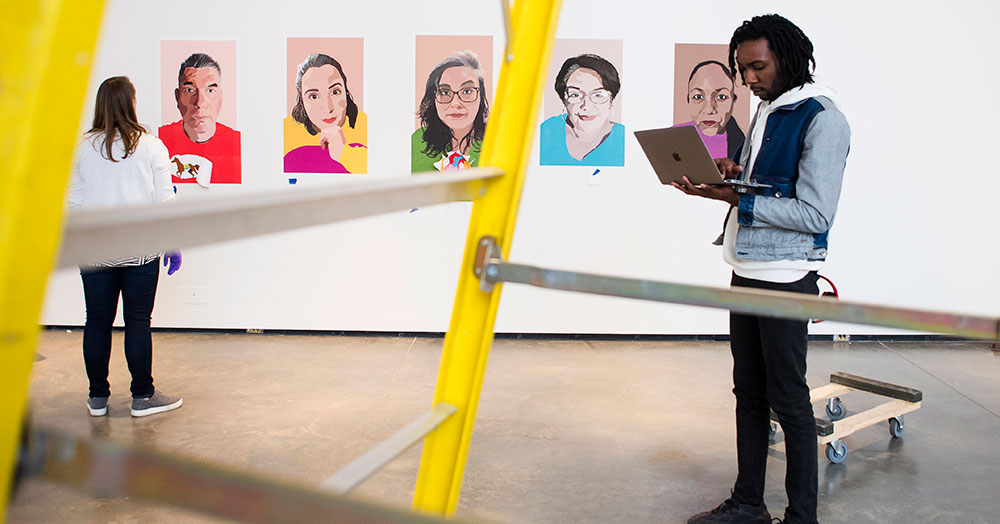 Intellectual property includes artwork and any other product of the human intellect. Above, student Giani Martin prepares for the Bachelor of Fine Arts Exhibition at the Abroms-Engel Institute for the Visual Arts in 2019.
Intellectual property includes artwork and any other product of the human intellect. Above, student Giani Martin prepares for the Bachelor of Fine Arts Exhibition at the Abroms-Engel Institute for the Visual Arts in 2019.
1. Intellectual property doesn’t have to be something you can touch — and it is not the same thing as a patent.
Intellectual property (IP) is any product of the human intellect that the law protects from unauthorized use by others.
IP is not necessarily a physical product, as it was in Tolwani’s case. Examples include
- Discoveries (such as a new way to improve child nutrition via a survey)
- Artworks
- Inventions (for example, a set of curricula for training first-responders to serve patients with autism)
- Publications
- Websites and software
Intellectual property can be protected by patent, copyright, trademark and/or trade secret.
- Patent protection and trademark protection are obtained from the Patent and Trademark Office in the United States.
- Copyright protection is inherent in the property when created and reduced to a tangible form; U.S. copyrights are registered with the Library of Congress.
 An ideation session in the Nielsen Innovation Lab at the home of the Harbert Institute for Innovation and Entrepreneurship and Collat School of Business on UAB's campus.
An ideation session in the Nielsen Innovation Lab at the home of the Harbert Institute for Innovation and Entrepreneurship and Collat School of Business on UAB's campus.
2. Inventions move everyone forward
“If we are successful in licensing an invention, it starts a virtuous cycle,” said Karthik Gopalakrishnan, Ph.D., director of licensing and new ventures at the HIIE. “Research leads to invention disclosures, which lead to licensing, commercialization and royalties, which go back to fund research.”
Disclosure has several benefits:
- It protects important assets from theft, exploitation or abuse
- It identifies contributions by an organization or inventor to the field
- It secures monetary compensation for an organization (and sometimes the inventor)
- Intellectual property may be the only asset an organization has to leverage
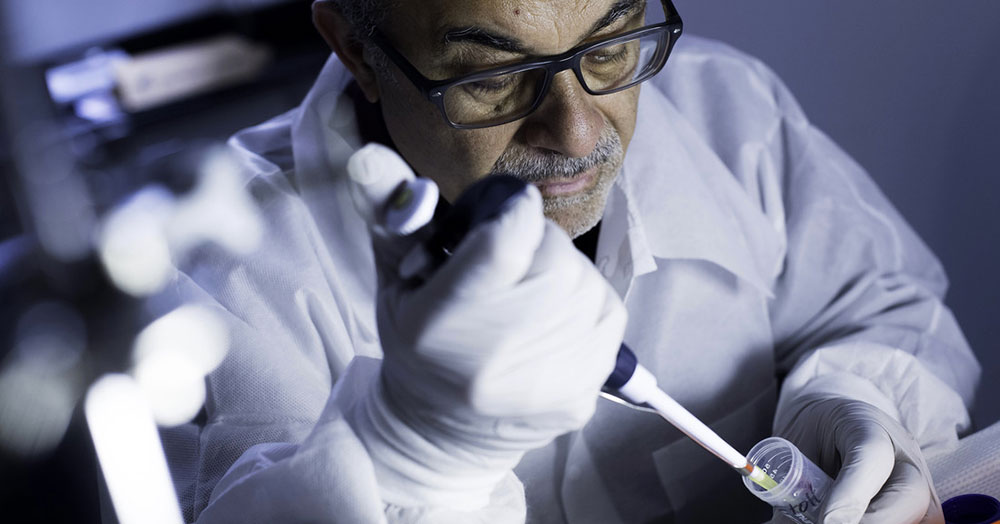 TriAltus Bioscience, which has lab space at Innovation Depot (pictured above), was born from work by UAB inventors Pat Higgins, Ph.D., Alexey Vasiliev, Marina Vasilieva and Dmitry Vassylyev, Ph.D.
TriAltus Bioscience, which has lab space at Innovation Depot (pictured above), was born from work by UAB inventors Pat Higgins, Ph.D., Alexey Vasiliev, Marina Vasilieva and Dmitry Vassylyev, Ph.D.
3. UAB’s revenue distribution model rewards inventors, their departments and schools.

The benefits of commercialization flow to the inventors, their departments and schools and the institution as a whole, Gopalakrishnan explained. Income is distributed according to the table above.
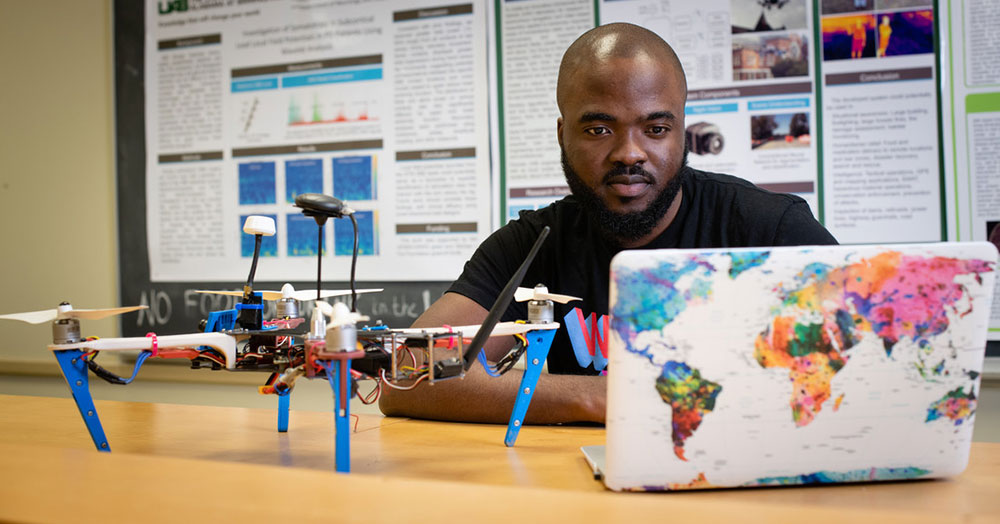 Electrical and Computer Engineering student Ojieabulu "O.J." Omozejele works on a quadcopter in the ANRY Drone Controls Lab for Unmanned Aerial Vehicle (UAV) integration, research, and prototyping.
Electrical and Computer Engineering student Ojieabulu "O.J." Omozejele works on a quadcopter in the ANRY Drone Controls Lab for Unmanned Aerial Vehicle (UAV) integration, research, and prototyping.
4. Disclosure is a requirement of employment and, in some cases, enrollment at UAB.
UAB policy requires all faculty members and university employees, as a condition of their employment, to report any invention or discovery that they have conceived or developed, or which has been conceived or developed under their direction, during their employment.
Even if you believe that you are not required to assign the IP to the HIIE, you must disclose it.
For students, UAB’s policy is that IP ownership resides with a student as long as the following criteria are true:
- All UAB-affiliated inventors are students or otherwise not covered by the UAB patent policy;
- None of the UAB-affiliated inventors are employed by UAB in a research setting (that is, doing research-related work study or in part-time, casual or temporary roles; in a research assistant, teaching assistant, fellow or post-doc position; or in any other research capacity); and
- The activity from which the invention arose did not:
- Make significant use of funding provided by, through or to UAB (gifts provided to UAB, UAB departmental funds or funds provided by federal or state governments, such as NIH, NSF or Department of Defense funding, or industry or nonprofits such as the Komen Foundation or Arthritis Foundation);
- Use university resources, such as laboratories or technical equipment, more than on an incidental scale; or
- Use university employee time.
“Significant use” in this case, is not considered to mean:
- Advice that a student may receive from a faculty or staff member as may be commonly solicited in the context of an educational experience (i.e., related to a course);
- Use of UAB resources by students in the context of their coursework or other programs or educational spaces made available to them through their enrollment at UAB (e.g., UAB MakerSpace, classrooms, dorms, and email); or
- Attendance and participation in the Anvil Student Startup Bootcamp.
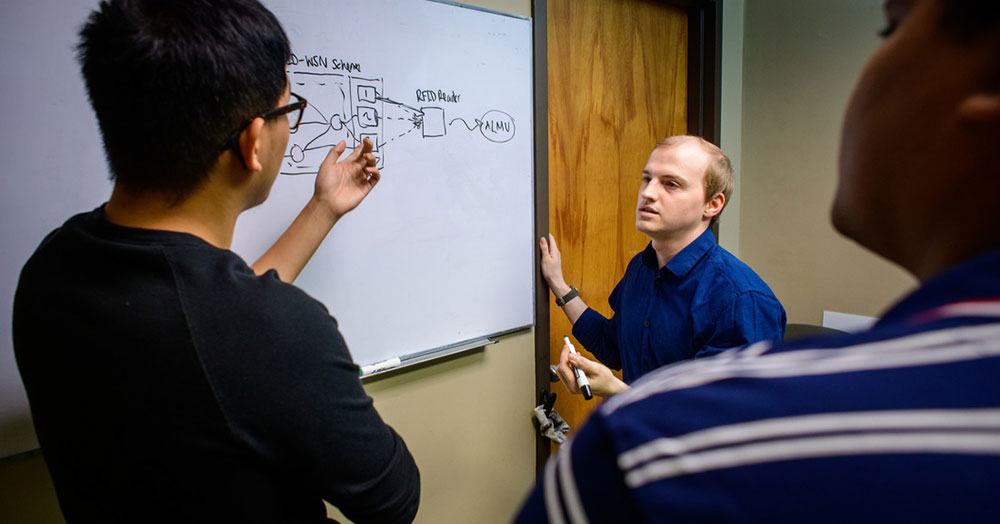 Graduate students Joseph Wei, Samuel Gardner, and Kamal Hossain discuss radiofrequency technology in the Bioinspired Integrated Circuit (BIC) Design Lab.
Graduate students Joseph Wei, Samuel Gardner, and Kamal Hossain discuss radiofrequency technology in the Bioinspired Integrated Circuit (BIC) Design Lab.
5. The HIIE will help you understand the commercial potential of your invention.
The first step in working with the Harbert Institute is to complete the Intellectual Property Disclosure (IPD) form at uab.edu/innovation/disclose.
The HIIE staff “will help you understand the commercial potential of your invention and understand the market trends related to your invention,” Gopalakrishnan said.
“Please speak with us about a potential invention before you publish or present it to the world,” Gopalakrishnan said. Once research has been published or presented in a public forum, it is much more difficult to retain the intellectual property or patent protection.
Why federal funding matters in IP.
- When IP is generated using funding from government agencies, the HIIE reports this fact and other events in the life of the IP, including the filing of an IPD, filing of a patent application and revenue gained by licensing the IP.
- If the HIIE opts to not pursue commercialization of an innovation funded by a government agency, it waives the IP to that agency, or if requested, requests a waiver for the innovator or innovators to obtain IP rights to the innovation.
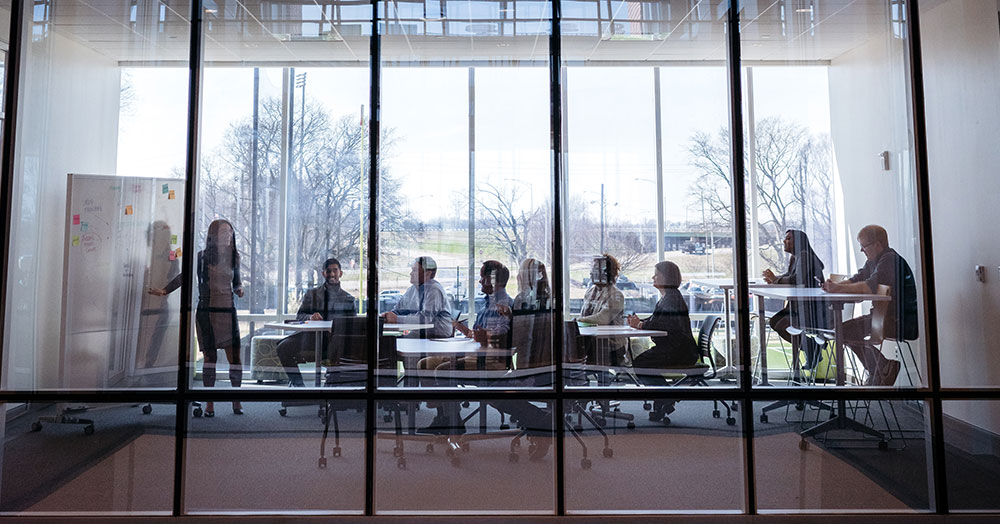
6. The HIIE will provide an initial answer within a month.
Although the timeline for each innovation will vary, the HIIE uses the following process:
- An initial meeting between the innovator and an HIIE licensing associate will be scheduled within one to two weeks of IPD processing.
- The HIIE the conducts a preliminary phase of market research and patentability studies between two and four weeks from disclosure.
- Assuming these studies indicate that patent protection and technology marketing is warranted, a provisional or non-provisional patent application will be filed, which can take four to eight weeks.
- After filing, coordination between the HIIE, its patent attorney, and the U.S. Patent and Trademark Office takes place, but it will take several years for the patent to be granted or denied.
